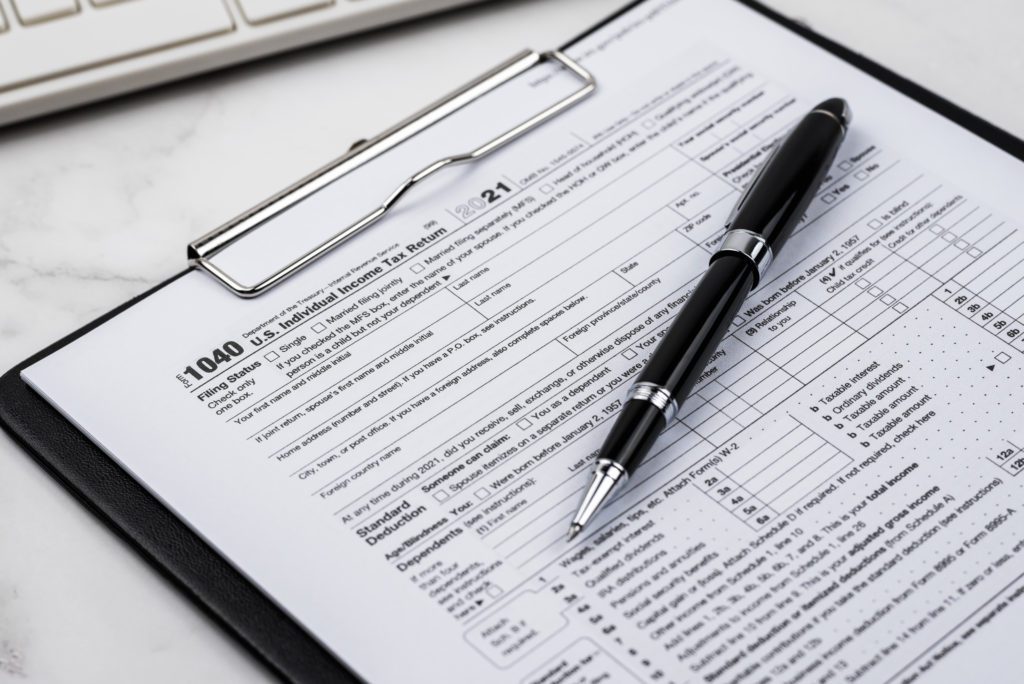If you’re looking to buy a new home, the current market includes good news and bad news.
The bad news is that the government is fighting inflation by raising interest rates; so a mortgage will cost you more.
But the good news is that the red-hot housing market is cooling, and many sellers are finding that their asking prices must come down to close a deal. That may mean a lower purchase price and a smaller down payment for you.
With mortgage interest rates drifting higher, it is more important than ever to make sure that you are prepared for pre-approval.
By putting in the work to reassure potential lenders that you are well qualified for a mortgage loan, you can avoid problems, speed up the mortgage pre-approval process and perhaps increase the amount you are qualified to borrow.
Qualified and Ready
To pre-approve your application, a mortgage lender needs to know all about your income, work history, credit rating, down payment savings and much more.
In this article, we’ll provide a complete pre-approval checklist for first-time buyers, including everything you’ll need to impress any potential lender with your qualifications and readiness to borrow.
Then, with your mortgage pre-approval in hand, you’ll be ready to make a great first impression on real estate agents and home sellers.
Documents Needed for Pre-Approval
Whether you plan to apply for a conventional, FHA, VA or USDA mortgage, there are standard documents required for all loan applicants. These include:
- Income Verification
- Bank Statements
- Investment Accounts
- Tax Documents
- Monthly Obligations
- Landlord References
- Credit Review
- Donor Gift Letter
- Military Service Record
- Photo Identification
Let’s take a look at each of these requirements in detail, along with a few tips for making sure you put your best foot forward in your application.
Income Verification
A mortgage lender’s primary concern is the borrower’s ability to afford the purchase price and meet the monthly mortgage payments.
The lender needs to know how much you make, but will also evaluate the quality of your income to determine whether you have a solid job with a stable employer.
If you are paid by check, save the stubs that show your weekly or monthly gross and net pay, along with the cumulative totals for amounts paid year-to-date. If you haven’t been saving pay stubs, you may be able to get copies of checks from your bank.
If you are paid by direct deposit, you can get a report of your pay for one period, one year or multiple years, depending on the system used by your human resources department.
If your employer uses one of the online payroll providers, such as Paychex or ADP, you can register as a user to view and print reports of your payroll history.
Presenting complete information demonstrates that you know how to monitor your financial inputs.
Income From a Business
If you are a professional, self-employed or the owner of a business, your mortgage lender will want to see your tax returns and reported business results for the prior three years.
At the time of your mortgage application, you will also need to provide a year-to-date P&L, which should be verified by audit, or accompanied by three months of the most recent business bank statements.
Bank Statements
Lenders use bank statements as a confirming form of income verification that backs up your payroll details and shows proof of your down payment.
Bank statements also provide further visibility of how you manage your deposits, withdrawals and balances, all of which will suggest your ability to afford and manage a mortgage.
Lenders will also use your bank statements to look for warning signs, such as recurring episodes of insufficient funds, frequent transfers between banks, large undocumented deposits and other signs of unstable income or erratic money management.
You should obtain statements for the three months prior to pre-approval application. If your bank is mailing a statement each month, you will have this on paper.
If statements are not mailed, you can request them from the bank, or you can access your account online and print reports for the periods you wish to document.
If you have more than one bank; for example, one each for checking and regular savings, plus a credit union for long-term saving like your down payment, be sure to include statements from each account. The same goes for any business accounts that may be part of your income.
Investment Account Statements
To accurately evaluate your ability to pay, and to determine how much money you can borrow, a mortgage lender will consider all of your assets and potential sources of income, which includes investment accounts.
If one particular investment account will be the source of your down payment, point this out to the lender.
Your employer can provide a statement for 401(k), 403(b) or other job-based retirement accounts. If you own an IRA, a trading account or other stocks, bonds or mutual funds, your investment advisor can either prepare a statement or show you how to access your accounts online.
Income From Investments
If part of your regular income is based on dividends, rents or other payments that come from investments, make sure that you document this so that the lender includes this part of your income.
Tax Documents
The tax portion of your documentation should include, at minimum, the W-2 forms for two years prior to your application. If you have changed jobs in the past two years, be sure to include all W-2s.
With new developments in gig work and sharing businesses, it is very common today to have extra sources of income.
Although a stable primary job is the most important source when qualifying for a mortgage, it is a strong positive to show lenders that you can turn on extra income when needed. Contract labor is usually reported on Form 1099; so be sure to include these with your W-2s.
Attach Your Tax Returns
A good way to organize W-2s and 1099s is to attach them to your 1040. Your tax return is not necessarily required, but it is a convenient way to summarize all sources of income, along with other information that shows you are well-organized financially.
If you use tax preparation software, such as TurboTax, you can easily print copies for the past two years. If you use a tax preparer, he or she may be able to provide copies, or you can request prior year tax returns from the IRS.
Monthly Obligations
This section of your documentation is very important because the mortgage lender will use it to calculate your Debt-to-Income Ratio, or DTI. Put simply, your DTI is the ratio of what you have going out to what you have coming in, which tells the lender whether you are able to take on more debt.
Your DTI is calculated by adding up the total of your monthly obligations and dividing that total by your gross monthly income. Your list of monthly obligations should include any recurring commitment or debt that has a minimum required payment. Your list should include:
- Rent (or if you own house, mortgage) Payments
- Auto Loans
- Credit Cards
- Personal Loans
- Student Loan Payments
- Homeowners Insurance
- Auto Insurance
- Property Taxes
- Monthly Fees (such as a homeowner’s association)
DTI Example
If the total of your monthly rent, car payment, credit card and student loan is $2,400, and your gross monthly household income is $6,000, then 2,400 divided by 6,000 is 0.40, for a DTI ratio of 40.
A DTI ratio lower than 43 is an important benchmark for mortgage loan qualification. Unfortunately, if your DTI ratio is higher, you may not be approved for a mortgage loan, even with a high income.
As you work to balance your income and obligations, a DTI ratio lower than 35 is a worthwhile goal, as that will help you qualify for the best interest rates.
Landlord References
Although no one can see the future, mortgage lenders know that the best predictor of future outcomes is past performance. And if you are a first-time homebuyer, the best way to predict whether you will make your mortgage payments on time is to check with your landlord.
You won’t need copies of leases or rental agreements, but you will need contact information for all former landlords and rental communities. Your lender will tell you how far back they want to check.
You will need the name and address of the rental property, how long you were a tenant, the name of the property manager or landlord and a current telephone number. This is an important reference that will be checked, so be sure that the information is up-to-date.
Explain Any Negative Report
If a former landlord will be reporting any negative information about your performance as a tenant, such as late rent or a dispute over a security deposit, be ready with a written statement explaining the cause of the problem and how it was resolved.
If You Already Own a Home
If you own a home and your mortgage application will be for a second property for investment or a vacation home, the lender will want to see recent statements from your current mortgage lender.
The equity in your home is an asset, but the monthly payment must be considered in your DTI to determine whether you can afford another obligation.
Credit Review
At some point in the qualification process, the lender will run your credit report, a major factor in determining whether you can obtain a mortgage, how much you can qualify to borrow and what interest rate the lender will offer.
Before the lender asks for this key element of your financial profile, you must conduct your own review to make sure that the information in your file is current and accurate.
Errors are common in credit reporting files, and they can ruin your campaign for loan approval. A fully paid debt may have been reported as an unpaid write off. Information on someone else may have been mistakenly added to your file.
You can find and correct any errors, and even when negative information is valid, you have the opportunity to explain the circumstances.
By law, you are entitled to a free credit report each year from all three of the major credit reporting agencies. There are numerous online offers of credit reports, but the best resource is annualcreditreport.com, the free tool provided by Equifax, Experian and TransUnion.
Donor Gift Letter
If any part of your down payment is a gift from a family member, your lender will require a donor gift letter confirming that the money is not a loan and will not have to be repaid. If you are obliged to pay back a loan of the money for your down payment, that belongs in your debt-to-income ratio.
If you are applying for a conventional loan, you can only receive a gift from a family member. With an FHA loan, you can also receive a gift from an employer or a first-time buyer program. In any case, a donor gift letter should include the donor’s name, contact information and relationship to you.
Indicate the amount of the gift, when it was received and how it will be used. It is very important to include an explicit statement by the donor that the gift is not a loan and does not have to be repaid.
Finally, the donor gift letter must be signed by both the donor and recipient.
Military Service Record
If you are a veteran applying for a VA loan, you will need Form DD 214 to verify your discharge or retirement. A surviving spouse will need the service member’s DD 214 and a death certificate, as well as a marriage certificate.
Photo Identification
Lenders have to guard against identity theft. To be sure that they are not lending the money to someone pretending to be you, they will require a government issued photo ID.
In most cases, your driver’s license is satisfactory. If you do not drive, a passport, state ID card or alien registration card can be used.
You may also be asked for separate verification of your Social Security number, with a Social Security card or a tax document.
Make a Great First Impression
There are two ways to apply for mortgage pre-approval: You can take a passive role and let the lender send you after each piece of documentation. Or you can use can use this checklist to take an active role in preparing and presenting your pre-approval documents.
By organizing your pre-approval information before you apply, your application will go faster, you can avoid common pitfalls and you will impress the lender by demonstrating orderly control of your finances. Just the sort of borrower who deserves to be offered a great loan package and a competitive interest rate.
Now Show Your Letter to Every Real Estate Agent
Once your lender provides a pre-approval letter, make sure you provide this to every real estate agent you encounter as you house hunt and throughout the entire home buying process. To a real estate agent, pre-approval means you are more than a potential buyer; you are a qualified buyer.
Real estate agents don’t want to waste time showing their listings to lookers. Once you are pre-approved, your own buyer’s agent will hustle to show you more homes, and each real estate agent representing those properties will regard your interest as a potential sale and a high priority.









